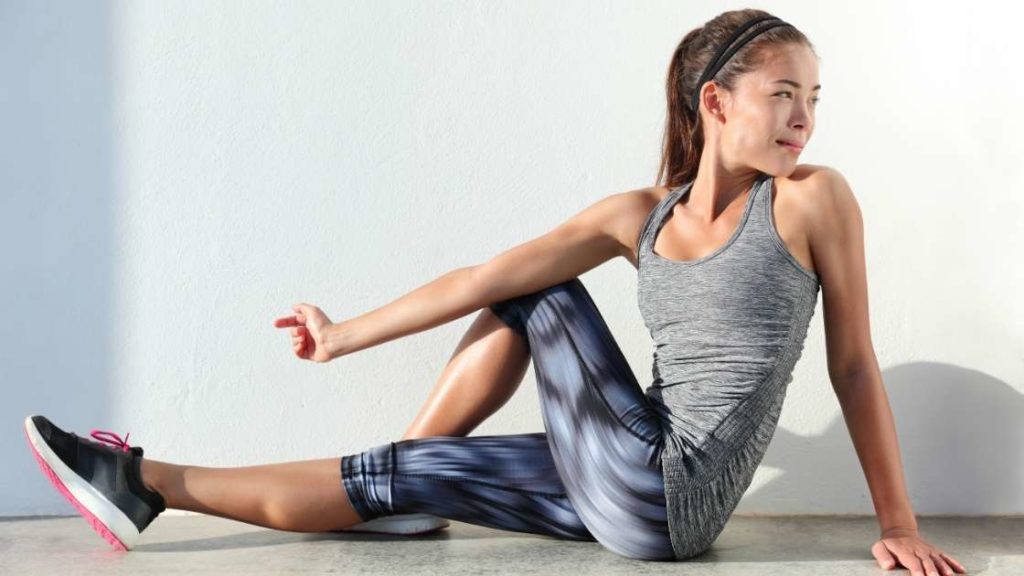When Is the Best Time to Stretch?

“I know, I need to stretch more.” This is something I hear often from first-time patients, usually while I’m gliding over a particularly tight muscle. I’m always really glad when first-timers say this, as it gives me a chance to prevent them from counterproductive stretching!
It’s true. Stretching isn’t always helpful, and can even worsen knotted muscles when done incorrectly. So how can you be sure you’re doing it right? How can stretching do both harm and good? Let’s talk about why, and then I’ll tell you when’s the best time for stretching!
The Knotted Rope
I’ve talked about the knotted rope in previous articles. And I’ve also addressed how I always talk about the knotted rope in previous articles. But there’s really no better analogy I can come up with for unproductive stretching, so here I go again.
What happens if you pull on a rope with a knot in the middle? The knot tightens and ultimately becomes even more difficult to release. Your muscle fibers work the same way. When your muscle fibers are stuck together, they need to be released — not pulled! Pulling that knot won’t do anything except increase your risk of injury.
You’ll want your muscles to be loosened up before you stretch. So there’s your short answer: the best time to stretch is when the muscles aren’t so tight. So what can you do to get your muscles ready for stretching?
When to Stretch
Post-Exercise
- Heat makes muscles more pliable. Stretch while that post-workout warmth is still flowing through your muscles!
- This should be a given that stretching pre-workout isn’t the best way to go. Well, unless you do one of the following bullet points just beforehand.
After Heat Therapy
- Ok, some redundancy here. Warmth makes for more flexible muscles. Sit in a sauna, apply a hot pack to your sore areas, do any sort of heat-producing activity for 15 minutes or so. Then stretch!
During or After Bodywork
- Muscular relaxation is one of the most common reasons people seek massage therapy. The improved blood flow feeds nutrients to those unnourished muscles, which makes the adhesions easier to break up. I’ll often send patients home with a list of stretches they can do at home, and tell them they’ll get the best results if they do them by the end of the day!
- Also know, you can receive assisted stretching during a massage too! It’s commonly used in sports massage, but can really be added to any type of massage. Ask your therapist about it!
Don’t Forget to Hydrate!
Before you do your stretches, make sure you’ve been drinking your water! Your muscles are 70-75% water, and they won’t do their job right if they’re dehydrated. With your range of motion limited, you’re at risk for cramps and spasms if you try to reach your normal range.
So, When Is the Best Time to Stretch? Now You Know!
Do your stretches, but make sure to do them the right way! Stay flexible and pain-free!

Katrina Jenkins
Author, Licensed Massage Therapist
Katrina Jenkins graduated from Towson University in 2013 with a Bachelor’s Degree in Health Science and worked as a nurse’s aide briefly before pursuing her true passion. She graduated from the Massage Therapy Institute of Colorado in April 2016 with honors and completed the Touch of Healers Scholarship Program the following summer. She has been a part of the Moyer Total Wellness Team since the summer of 2017.
Resources
Bain, Julie. “New Ideas on Proper Stretching Techniques.” WebMD, www.webmd.com/fitness-exercise/features/new-ideas-on-proper-stretching-techniques#1.
Cronkleton, Emily. “Sore after Massage: Why This Happens and What to Do.” Healthline, 20 Mar. 2020, www.healthline.com/health/sore-after-massage. Accessed 3 Mar. 2021.
Sissons, Claire. “What Percentage of the Human Body Is Water?” Www.medicalnewstoday.com, 27 May 2020, www.medicalnewstoday.com/articles/what-percentage-of-the-human-body-is-water.
Photo Credit
Canva by martinmarksoerensen
